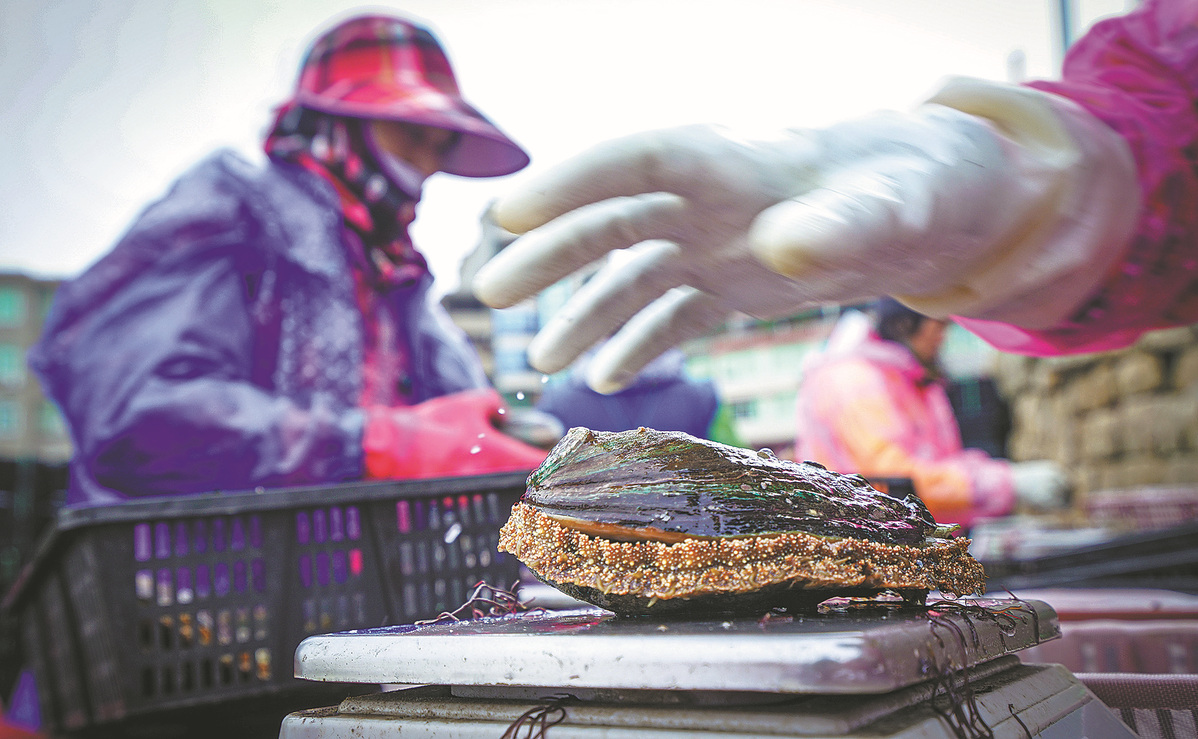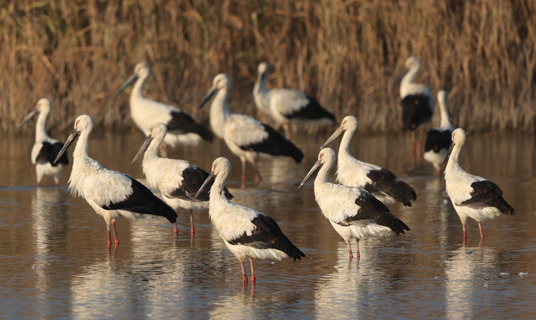A sea change for abalone
 A palm-size abalone. ZHENG CHENGLE/CHINA DAILY
A palm-size abalone. ZHENG CHENGLE/CHINA DAILY
Industry support
The abalone industry is booming thanks to the improved abalone breeding and increased consumption demand. After more than 30 years, the industry in Lianjiang has developed from traditional abalone farming to the formation of a complete industry chain that integrates seedling, farming, processing, sales, and tourism. The industry has shifted from independent operations to joint development, achieving the transformation of the abalone industry from product operation to brand economy. Since 2010, Lianjiang has become the largest abalone farming county in China.
In 2023, the county had 12 abalone processing production lines in total, with an annual processing capacity of over 8,200 tons, generating an output value of about 900 million yuan. The processed products include dried abalone, frozen abalone, canned abalone, pre-made abalone dishes, and leisure ready-to-eat products.
Fujian Fengyun Abalone Co Ltd, the only company in China that boasts whole abalone industrial chains, began its business in 1998.
At the seedling and breeding end of the industry chain, it has built three abalone breeding bases, with an annual output of 60 million abalone fry. The breeding bases in Lianjiang, and Shandong's Rongcheng produce 1000 tons.
In the processing part of the industry chain, it has built China's first automatic abalone processing production line and China's first abalone prefabricated dish research and innovation center. Its annual frozen abalone production capacity and deep processing capacity are worth more than 1 billion yuan, and 500 million yuan respectively.
To sell its product, it set up live abalone distribution centers in Lianjiang and Rongcheng to deliver live abalone to all parts of the country. At present, it has covered more than 50 first-tier and second-tier cities, forming a nationwide sales network.
To help local farmers with abalone breeding, the company, in collaboration with the local government and bank, released a project to help local abalone farmers in 2021. Led by the Lianjiang government, universities provided technological support for seedlings and farming techniques. The bank provided funding, while the company acted as a guarantor for the cooperative farmers to secure loans from the bank and also provided sales channels for their abalone.
"As of 2021, this model has provided 35.6 million yuan of specialized financing for 46 abalone farmers, effectively addressing the financing difficulties faced by the abalone farmers, stabilizing sales channels and connecting the abalone farming supply, production, and sales chains," said Xiao Liangdong, president of Fujian Fengyun Abalone Co Ltd.
Besides, it established a livestreaming base in 2022 to help local farmers with abalone sales by using new sales channels, such as short videos and livestreaming.
Local governments also attach great importance to the abalone industry. In 2020, Lianjiang introduced several policies to help the industry's development. It provides subsidies to companies providing storage facilities in refrigeration houses or opening wholesale abalone stores, expands sales channels by working with Yonghui, New Huadu, Walmart and other large supermarket enterprises, and uses QR code to monitor food quality.
Offshore aquaculture platforms also play an important role in promoting sustainable development. On October 26, 2018, China's first mechanized breeding platform for abalone, Zhenbao No 1, was put into use in Dongluo Island in Lianjiang, marking a milestone in modernization of the domestic abalone farming industry, Fuzhou Daily reported.
The breeding platform can accommodate nearly 5,000 abalone breeding boxes, with an expected annual yield of about 12 tons. It achieved full mechanization of bait delivery, release, and net lifting and lowering. At the same time, the Zhenbao No 1 expands the scope of abalone farming from the nearshore area 200 meters offshore to the outer sea area 3 kilometers away, where the average water depth is 30 meters, and the seawater is clear and has high oxygen content, which will significantly improve the quality and growth rate of abalone. In addition, the equipment takes full advantage of the abundant natural resources at sea, incorporating a wind power generation system to provide green energy for abalone farming, making it energy-efficient and environmentally friendly.
Financial and technical support to Lianjiang has helped its abalone industry reach a new high. "In 2023, the annual output value of the abalone industry in Lianjiang is expected to reach 5.656 billion yuan," said Hu Jian, director of the Lianjiang bureau of oceans and fisheries.
Zhao Ruixue contributed to this story.




